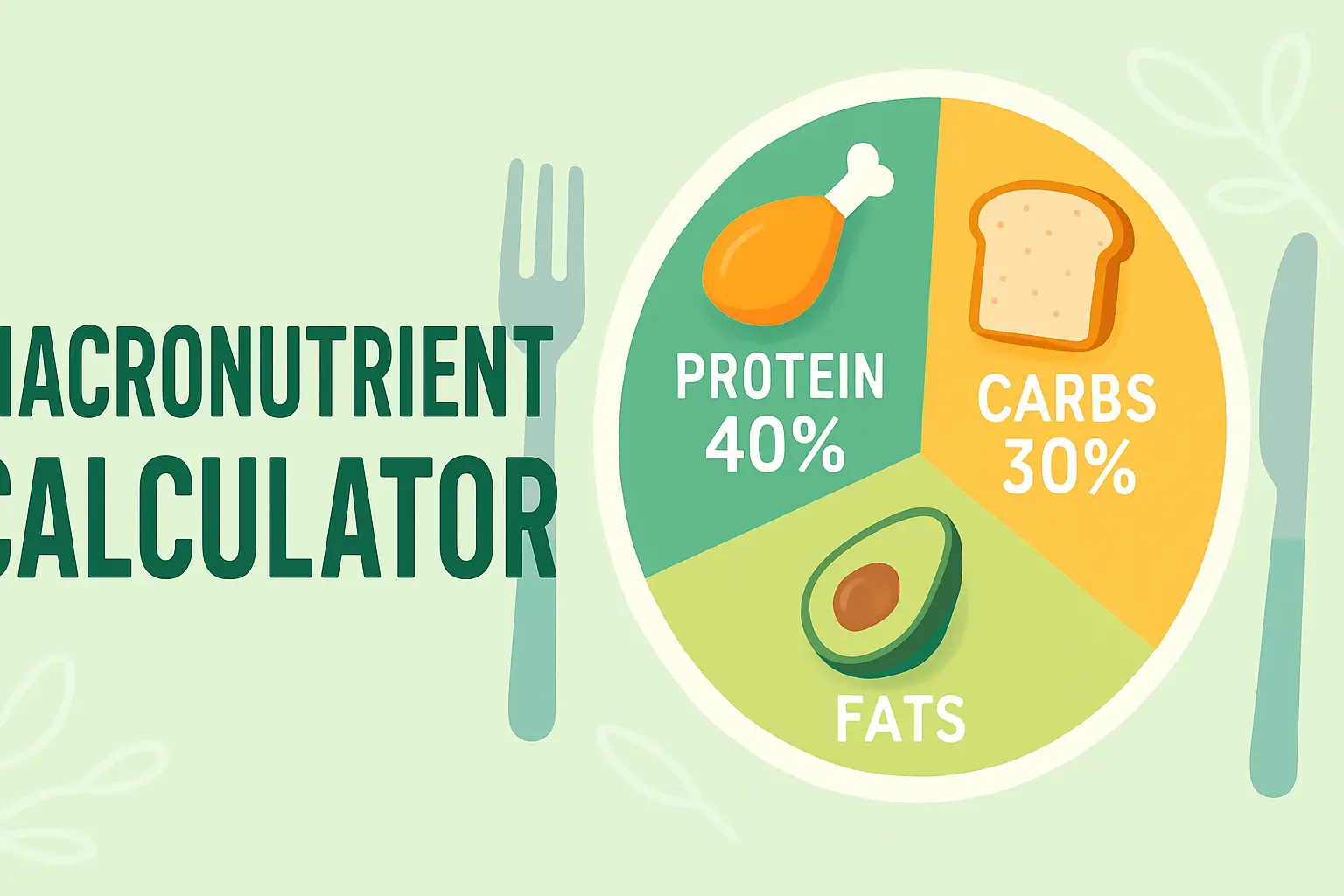CAT Percentile Calculator
Predict your CAT percentile with precision. Analyze your chances at top IIMs and get personalized preparation strategies for CAT 2025.
Enter Your Expected Scores
Academic Background (Optional)
Your CAT Analysis
Understanding CAT Exam and Percentile System
The Common Admission Test (CAT) is India's premier management entrance examination, conducted annually by the Indian Institutes of Management (IIMs) on a rotational basis. The CAT percentile calculator is an essential tool for MBA aspirants to predict their performance and plan their admission strategy effectively.
Understanding how CAT percentiles work is crucial for every serious MBA candidate. Unlike raw scores, percentiles provide a relative ranking system that compares your performance against all other test-takers. This normalization process ensures fair evaluation across different test sessions and difficulty levels.
CAT 2025 Key Facts
- Total Questions: 66-68
- Duration: 2 hours
- Sections: 3 (VARC, DILR, QA)
- Marking: +3 correct, -1 incorrect
- Mode: Computer-based test
CAT Exam Structure and Scoring System
The CAT exam consists of three sections, each testing different skill sets essential for management education. The Verbal Ability and Reading Comprehension (VARC) section evaluates language proficiency and comprehension skills. Data Interpretation and Logical Reasoning (DILR) tests analytical and logical thinking abilities. Quantitative Ability (QA) assesses mathematical and problem-solving skills.
Each section typically contains 22-24 questions, with a mix of multiple-choice questions (MCQs) and Type-In-The-Answer (TITA) questions. The scoring follows a +3 for correct answers and -1 for incorrect MCQ responses, while TITA questions have no negative marking. This scoring system makes strategic thinking crucial for optimal performance.
Section-wise Analysis
VARC
Reading Comprehension & Verbal Ability
DILR
Data Interpretation & Logical Reasoning
QA
Quantitative Ability & Problem Solving
CAT Percentile Calculation Methodology
The CAT percentile calculation follows a sophisticated normalization process that ensures fairness across different test sessions. Understanding this methodology is crucial for interpreting your results and setting realistic expectations. The percentile represents the percentage of candidates who scored lower than you in the examination.
Percentile Formula
Percentile = [(Total Candidates - Your Rank) / Total Candidates] × 100
The Normalization Process
CAT employs an equipercentile method for score normalization, which accounts for variations in difficulty levels across different test sessions. This process involves multiple steps: raw score calculation, statistical analysis of test difficulty, and scaled score generation. The normalization ensures that candidates taking the exam in different slots are evaluated on the same scale.
The raw score calculation begins with applying the marking scheme: +3 marks for each correct answer and -1 mark for each incorrect MCQ response. TITA questions receive +3 for correct answers with no negative marking. These raw scores are then subjected to statistical analysis to determine the relative difficulty of each test session.
Score Calculation Steps
- 1. Raw Score Computation
- 2. Difficulty Analysis
- 3. Statistical Normalization
- 4. Scaled Score Generation
- 5. Percentile Assignment
- 6. Final Ranking
Factors Affecting Percentile
- Number of test-takers
- Overall performance distribution
- Test difficulty level
- Section-wise performance
- Normalization adjustments
Historical Score vs Percentile Analysis
Analyzing historical data reveals important trends in CAT scoring patterns. Over the past seven years, the relationship between raw scores and percentiles has shown variations based on exam difficulty and candidate pool quality. Understanding these trends helps in setting realistic score targets for different percentile goals.
For instance, achieving a 99th percentile typically requires an overall scaled score between 150-170, while a 95th percentile might need scores around 120-140. However, these ranges vary annually based on exam difficulty and candidate performance distribution. Our calculation tools incorporate these historical variations for accurate predictions.
Comprehensive CAT Preparation Strategy
Developing an effective CAT preparation strategy requires understanding your current performance level, identifying target percentiles, and creating a structured study plan. The CAT percentile calculator helps you set realistic goals and track progress throughout your preparation journey.
Section-wise Preparation Approach
Verbal Ability & Reading Comprehension (VARC)
VARC preparation demands consistent reading habits and vocabulary enhancement. Focus on diverse reading materials including newspapers, magazines, and academic journals. Develop skills in identifying main ideas, drawing inferences, and understanding author's tone and purpose.
- Read quality newspapers daily (The Hindu, Economic Times)
- Practice RC passages from various domains
- Build vocabulary systematically
- Master grammar rules and usage
Data Interpretation & Logical Reasoning (DILR)
DILR requires strong analytical skills and pattern recognition abilities. Practice interpreting various data formats including tables, graphs, and charts. Develop logical reasoning skills through puzzles, arrangements, and logical sequences.
- Master different DI formats and calculations
- Practice logical reasoning puzzles daily
- Improve calculation speed and accuracy
- Learn to identify solvable sets quickly
Quantitative Ability (QA)
QA preparation involves mastering fundamental mathematical concepts and developing problem-solving techniques. Focus on building strong foundations in arithmetic, algebra, geometry, and number systems while practicing advanced problem-solving methods.
- Strengthen basic mathematical concepts
- Practice shortcut methods and techniques
- Focus on high-weightage topics
- Develop mental calculation abilities
Time Management and Test-taking Strategy
Effective time management during CAT is crucial for maximizing your percentile. Each section has a time limit of 40 minutes, requiring strategic decision-making about question selection and time allocation. Develop a personal approach based on your strengths and weaknesses in different areas.
Time Management Tips
- Spend 2 minutes on question analysis
- Identify your target questions early
- Don't get stuck on difficult problems
- Reserve time for review and accuracy
- Practice mental calculations regularly
- Track your progress with regular mocks
Regular mock tests are essential for understanding your current percentile level and identifying improvement areas. Use our CAT percentile calculator after each mock to track your progress and adjust your preparation strategy accordingly. This data-driven approach helps in making informed decisions about your study plan and academic performance tracking.
IIM Selection Process and Admission Criteria
Understanding the IIM selection process is crucial for leveraging your CAT percentile effectively. Each IIM has specific admission criteria that consider not just your CAT score but also academic background, work experience, and performance in subsequent selection rounds including Written Ability Test (WAT) and Personal Interview (PI).
Category-wise Percentile Requirements
Different categories have varying percentile requirements for IIM calls. The reservation system ensures diversity in admissions while maintaining academic standards. Understanding these requirements helps in setting realistic expectations and planning backup options effectively.
| IIM | General | OBC-NCL | SC | ST | EWS |
|---|---|---|---|---|---|
| IIM Ahmedabad | 99.0+ | 96.0+ | 88.0+ | 78.0+ | 99.0+ |
| IIM Bangalore | 99.0+ | 96.0+ | 85.0+ | 75.0+ | 99.0+ |
| IIM Calcutta | 99.0+ | 95.0+ | 85.0+ | 75.0+ | 99.0+ |
| IIM Lucknow | 97.0+ | 92.0+ | 82.0+ | 70.0+ | 97.0+ |
| IIM Kozhikode | 96.0+ | 90.0+ | 80.0+ | 65.0+ | 96.0+ |
Academic and Professional Profile Weightage
IIMs consider multiple factors beyond CAT percentiles for final selections. Academic consistency, work experience quality, gender diversity, and academic diversity all play crucial roles. Understanding these weightages helps in presenting your profile effectively during the selection process.
Old IIMs (A, B, C) Criteria
- CAT Score: 50-60%
- Academic Record: 15-20%
- Work Experience: 10-15%
- WAT & PI: 20-30%
- Diversity Factors: 5-10%
New IIMs Selection Factors
- Higher CAT weightage: 60-70%
- Lower academic weightage
- Moderate experience consideration
- PI-focused selection
- Regional diversity preferences
WAT and PI Preparation Strategy
The Written Ability Test and Personal Interview rounds are crucial for converting your CAT percentile into admission. WAT typically involves essay writing on contemporary topics, while PI assesses your personality, knowledge, and fit for the program. Preparation should focus on current affairs, communication skills, and self-awareness.
Success in these rounds requires consistent practice and feedback. Stay updated with current events, practice structured writing, and develop compelling personal narratives. Mock interviews and group discussions can significantly improve your confidence and performance. Remember that your CAT percentile gets you the interview call, but your performance in these rounds determines your final selection.
Strategies for CAT Score Improvement
Improving your CAT percentile requires a systematic approach focusing on weak areas while maintaining strengths. Regular use of a CAT percentile calculator helps track progress and identify specific improvement targets. The key is to understand that even small score improvements can lead to significant percentile jumps, especially in the higher percentile ranges.
Diagnostic Analysis and Gap Identification
Conducting regular diagnostic tests helps identify specific areas requiring attention. Analyze your performance across different question types, topics, and difficulty levels. This granular analysis reveals patterns in your strengths and weaknesses, enabling focused improvement efforts.
Analysis Framework
Topic-wise Analysis
Identify weak topics within each section
Speed Analysis
Track time taken per question type
Accuracy Analysis
Monitor accuracy trends over time
Targeted Improvement Plans
Create specific improvement plans for each identified weakness. For quantitative ability, this might involve strengthening fundamental concepts and practicing advanced problem-solving techniques. For verbal ability, focus on reading comprehension strategies and vocabulary building. DILR improvement requires practice with diverse puzzle types and data interpretation formats.
Common Improvement Areas
- Speed vs Accuracy balance
- Question selection strategy
- Time management per section
- Elimination techniques
- Calculation shortcuts
- Reading speed enhancement
Mock Test Strategy and Analysis
Regular mock tests are essential for CAT preparation, but their effectiveness depends on proper analysis and follow-up actions. Take full-length mocks under exam conditions, analyze results thoroughly, and create specific action plans for improvement. Use our CAT percentile calculator to track your mock test performance and predict your expected percentile range.
The frequency of mock tests should increase as the exam approaches, but quality analysis is more important than quantity. Focus on understanding why you made mistakes, identifying pattern errors, and implementing corrective measures. Track your percentile improvements over time to maintain motivation and adjust strategies as needed. This systematic approach to performance tracking ensures steady progress toward your target percentile.
Progress Tracking Metrics
Overall Percentile
Section-wise Scores
Time Per Question
Accuracy Rates
Frequently Asked Questions
How accurate is the CAT percentile calculator?
Our CAT percentile calculator uses historical data and statistical models to provide predictions with approximately 85-90% accuracy. However, actual percentiles may vary based on exam difficulty, candidate pool quality, and normalization factors. The calculator is most accurate for percentiles between 70-99.5.
What percentile do I need for top IIMs?
For old IIMs (Ahmedabad, Bangalore, Calcutta), General category candidates typically need 99+ percentile, while OBC candidates need 95-97+ percentile. SC candidates require 85-90+ percentile, and ST candidates need 75-85+ percentile. However, final selection also depends on academic profile, work experience, and WAT-PI performance.
How is CAT percentile different from marks?
CAT percentile represents your relative performance compared to all test-takers, while marks indicate absolute performance. A 90th percentile means you performed better than 90% of candidates. Percentiles account for exam difficulty variations and provide a fair comparison across different test sessions.
Can I improve my percentile in the remaining time?
Yes, focused preparation can significantly improve percentiles, especially in the 70-95 range. Concentrate on accuracy improvement, strategic question selection, and efficient time management. Even 5-10 point score improvements can result in 3-5 percentile point increases in competitive ranges.
How important are sectional percentiles?
Sectional percentiles are crucial as most IIMs have minimum cutoffs for each section. You must clear sectional cutoffs in all three areas (VARC, DILR, QA) to be eligible for selection, regardless of your overall percentile. Balance your preparation across all sections to avoid elimination due to sectional cutoffs.
What role does normalization play in CAT scoring?
Normalization ensures fairness across different test sessions by adjusting for difficulty variations. The equipercentile method used by CAT converts raw scores to scaled scores, ensuring candidates taking different test forms are evaluated on the same scale. This process can sometimes result in scaled scores being higher or lower than raw scores.
How should I interpret my mock test percentiles?
Mock test percentiles provide directional guidance but may not exactly match actual CAT percentiles due to differences in candidate pool and difficulty levels. Use them to track improvement trends and identify weak areas rather than as absolute predictors. Focus on consistent improvement rather than absolute percentile numbers in mocks.
What backup options exist for different percentile ranges?
For 95-99 percentile: Consider newer IIMs, FMS, MDI, and other top B-schools. For 85-95 percentile: Target good private B-schools and newer IIMs. For 70-85 percentile: Focus on state universities and emerging private institutions. Always apply broadly to maximize your chances of admission with scholarship opportunities.
Final Preparation Tips and Success Strategies
As you approach your CAT exam date, remember that consistent effort and strategic preparation are key to achieving your target percentile. Use the CAT percentile calculator regularly to track progress and adjust your study plan accordingly. Focus on maintaining accuracy while gradually improving speed, as this balance is crucial for maximizing your percentile.
Stay updated with current affairs for the interview rounds, maintain physical and mental health throughout preparation, and develop a positive mindset that will serve you well during the exam. Remember that the CAT percentile is just one factor in your MBA journey – your dedication to continuous learning and growth will ultimately determine your success in business school and beyond.
Ready to Calculate Your CAT Percentile?
Use our advanced calculator to predict your performance and plan your MBA journey effectively.
Your success in CAT depends not just on hard work but also on smart strategies and consistent execution. Leverage our tools, stay committed to your preparation plan, and approach the exam with confidence. With the right preparation and mindset, achieving your target percentile and securing admission to your dream B-school is entirely within reach.












